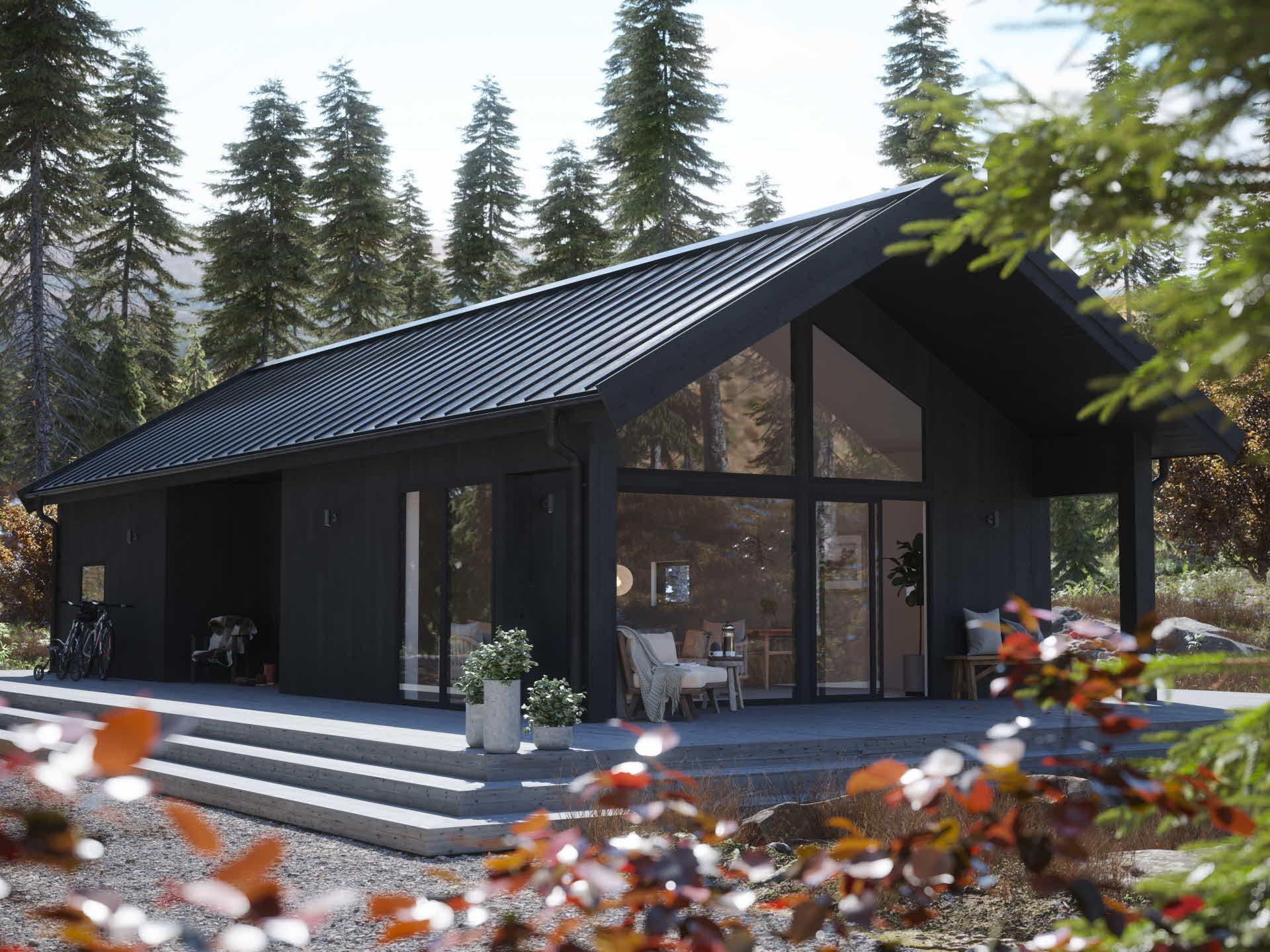
- WOOD
- SUSTAINABILITY
- THE BENEFITS OF USING WOOD
The building material of our future
Sweden's construction sector today emits approximately as much carbon dioxide annually as all its country's car traffic. Replacing fossil materials such as steel and concrete with more wood in houses and buildings would in turn mean that more carbon could remain in the ground. Something that would both contribute to reducing fossil emissions and that the benefit of our carbon dioxide-binding forests increases.

Thanks to the trees' ability to bind carbon dioxide from the atmosphere while they grow in the forest, all construction with wood contributes to a more sustainable future. This is because the carbon that has once been captured from the atmosphere continues to be stored in the products we manufacture throughout their lifetime. A life span that can extend over several generations through properly maintained buildings and houses.
Wood is also, unlike fossil materials such as steel and concrete, completely renewable. This is because each felled tree is replaced by at least two new plants in SCA's responsibly managed and constantly growing forests. Plants that, in turn, for just under a century are allowed to grow by capturing additional carbon dioxide from the atmosphere before they are felled and become new wood products for tomorrow's buildings and houses.
Last but not least, wood also has a lower weight in relation to many other building materials. Something that in turn contributes to making the climate footprint from the transport of wood smaller because the emissions are lower. An aspect of all major construction projects that today also needs to be taken care of and reviewed when new buildings are to be climate declared .